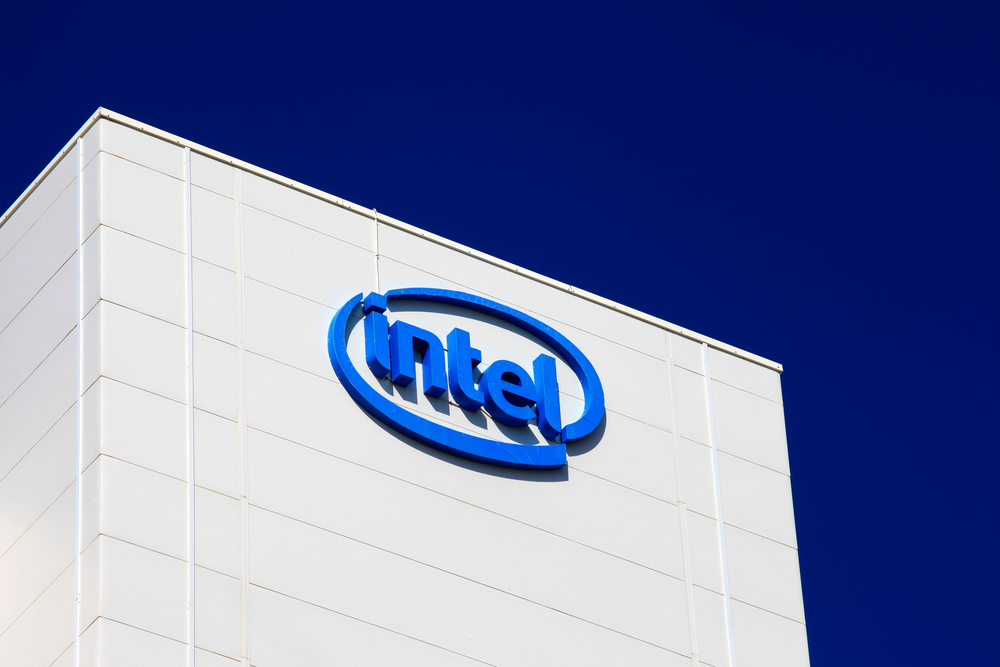Intel SSDs Moving to 144 Layer QLC Flash, Optane Getting PCIe 4.0
Just keep on stacking

Although Intel has been making some noise in the CPU department lately with Comet Lake-S, it's been nothing but silence from their memory solutions group. However, it looks like that's about to change, as the folks at Blocks & Files just got the scoop on Intel's plans for the vendor's next-gen SSDs, including its 2nd Generation Optane SSDs.
Going along with the current trend in NAND, Intel is stacking its flash memory to 144 layers. The technology is codenamed Keystone Harbor, and SSDs based on it are slated to debut in 2021.
However, Intel's plans for its SSDs don't end at high layer counts. According to Block & Files, Intel is also developing an SSD technology that stores five bits per cell, known as PLC. Few details are available at this time.
Intel's method of stacking memory cells up to 144 layers isn't unlike the work of Samsung's work in stacked NAND. Samsung is reportedly accelerating the development of 160-layer NAND using a "Double-Stack" technique. Chinese company YMTC is also building 128-layer QLC NAND using its own "Xtacking 2.0" architecture.
Intel Optane Gets PCIe 4.0
On the Optane front, Intel is also making strides with its 3D XPoint storage accelerator. The 2nd-Generation Optane SSDs will feature two-layer memory, and a new controller provides a PCIe 4.0 interface for data transfer between the SSD and your PC, greatly improving bandwidth. Today's Optane SSDs come in capacities up to 1.5TB, and it's expected that doubling the layer count will also lead to twice the capacity.
The new Optane SSDs are known under the codename Alder Stream, though we're not sure if the similarity in name has any connection to the Alder Lake-S CPUs that are expected to come two CPU generations from now.
We can expect to learn more about the 2nd-Generation Optane products sometime in June, when Intel will make its formal announcement.
Get Tom's Hardware's best news and in-depth reviews, straight to your inbox.
Niels Broekhuijsen is a Contributing Writer for Tom's Hardware US. He reviews cases, water cooling and pc builds.
-
CerianK Whether you like the idea of PLC (five bits per cell), or not, at least the SSD specs don't seem to try and hide the fact, unlike the SMR (shingled magnetic recording) debacle with HDDs that recently surfaced (and hopefully will now be fully disclosed for all drives). This is all very important for performance, reliability and/or compatibility.Reply -
DZIrl ReplyCerianK said:Whether you like the idea of PLC (five bits per cell), or not, at least the SSD specs don't seem to try and hide the fact, unlike the SMR (shingled magnetic recording) debacle with HDDs that recently surfaced (and hopefully will now be fully disclosed for all drives). This is all very important for performance, reliability and/or compatibility.
Just wait till SSD manufacturers start to remove FLASH technology from spec.
For example Samsung 870 EVO and 870 QVO are very close! -
bit_user TL;DR: Their fast storage products will get faster (and more expensive), while the slow ones will get slower (but with more GB/$).Reply -
bit_user Reply
Are you sure about that?CerianK said:Whether you like the idea of PLC (five bits per cell), or not, at least the SSD specs don't seem to try and hide the fact,
I'd bet there are already some QLC SSDs out there which don't publicly disclose that fact. -
ProfQuatermass I'd be more interested in the focus to producing more layers. Will 256 layers ever be possible I wonder? But the other direction is X or Y of course.Reply
